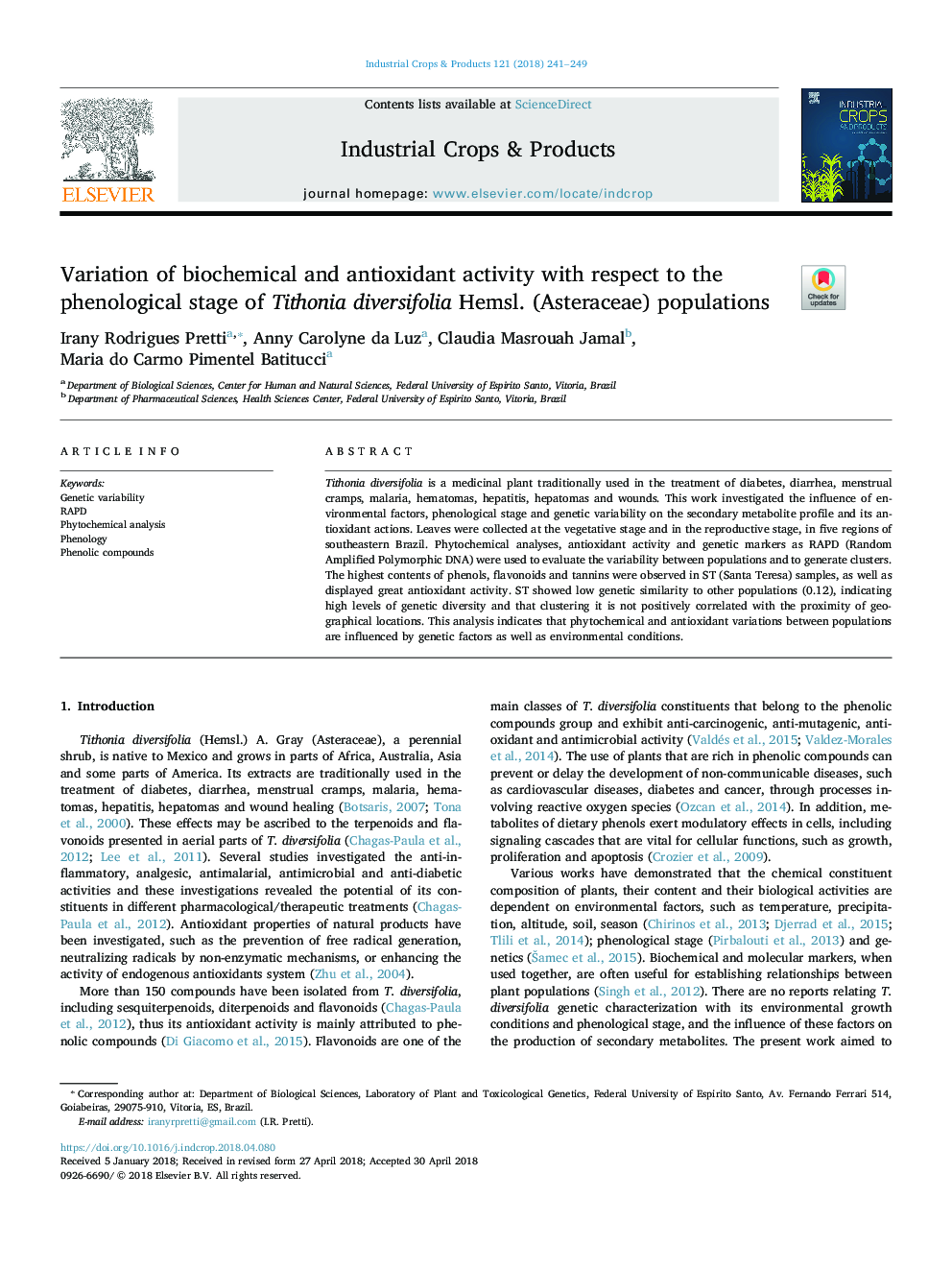| Article ID | Journal | Published Year | Pages | File Type |
|---|---|---|---|---|
| 8879799 | Industrial Crops and Products | 2018 | 9 Pages |
Abstract
Tithonia diversifolia is a medicinal plant traditionally used in the treatment of diabetes, diarrhea, menstrual cramps, malaria, hematomas, hepatitis, hepatomas and wounds. This work investigated the influence of environmental factors, phenological stage and genetic variability on the secondary metabolite profile and its antioxidant actions. Leaves were collected at the vegetative stage and in the reproductive stage, in five regions of southeastern Brazil. Phytochemical analyses, antioxidant activity and genetic markers as RAPD (Random Amplified Polymorphic DNA) were used to evaluate the variability between populations and to generate clusters. The highest contents of phenols, flavonoids and tannins were observed in ST (Santa Teresa) samples, as well as displayed great antioxidant activity. ST showed low genetic similarity to other populations (0.12), indicating high levels of genetic diversity and that clustering it is not positively correlated with the proximity of geographical locations. This analysis indicates that phytochemical and antioxidant variations between populations are influenced by genetic factors as well as environmental conditions.
Related Topics
Life Sciences
Agricultural and Biological Sciences
Agronomy and Crop Science
Authors
Irany Rodrigues Pretti, Anny Carolyne da Luz, Claudia Masrouah Jamal, Maria do Carmo Pimentel Batitucci,
